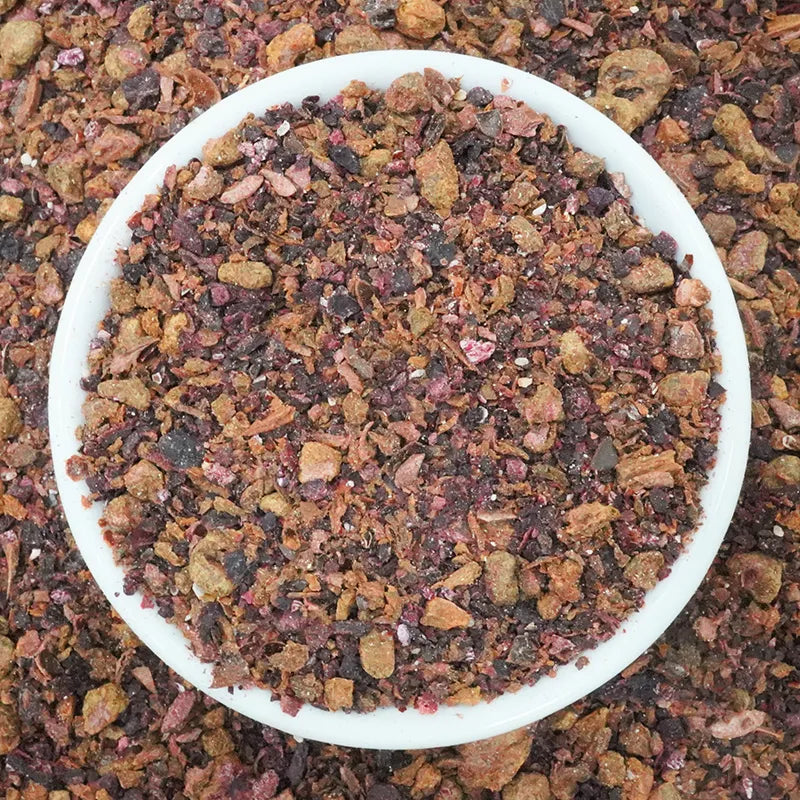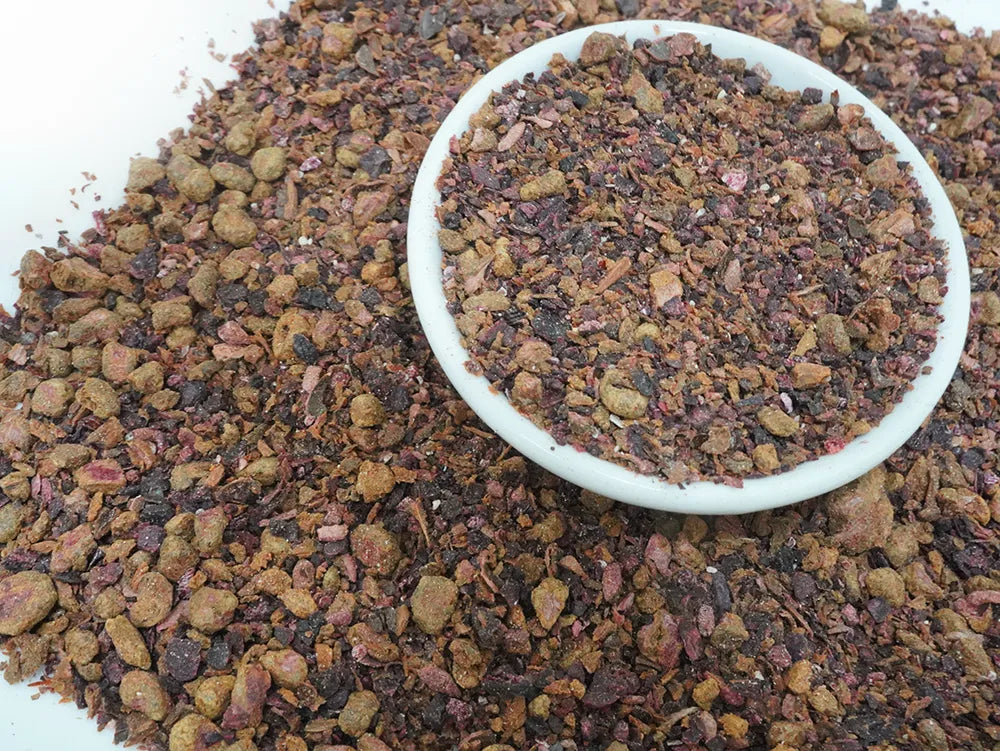Burdekin Plum Tea
,gravity=Center,allowExpansion)
,gravity=Center,allowExpansion)
,gravity=Center,allowExpansion)
Collect 24 Everyday Rewards points
Dispatch in 2 business days
FREE SHIPPING when you spend over $100
Exclusive to products sold by Tea Life
,gravity=Center,allowExpansion)
,gravity=Center,allowExpansion)
,gravity=Center,allowExpansion)
Collect 24 Everyday Rewards points
Dispatch in 2 business days
FREE SHIPPING when you spend over $100
Exclusive to products sold by Tea Life
Australia is home to the Burdekin Plum which comes from the subtropical and tropical trees of the country. Besides being a native fruit, it was also hidden gem in the culinary world for years. This fruit is strikingly attractive purple-black in colour, herbal and dietologically important in the traditional practices and bush tucker food for aboriginal Australians for years. The golden phytochemical properties of this native fruit helps in various cooking applications, and it is even preferred during British period’s colonial kitchens along with its health benefits.
Wildcrafted Australia
This fruit is harvested from the large trees version forests, which are mostly located at the coastal Queensland and Northern New South Wales. Their canopies are thick along with gloss leaves. However, it’s the big fruits which they bear which spent actually been paying attention for him hunters, cooks and fruits harvesters. They need to be picked when they are ripe and firm on the tree themselves, which changes their flavour from being astringent and tart to sweet and jammy.
Though not widespread famous outside of Australia, this fruit has slowly become popular amongst chefs and herbal enthusiasts because of its vivid hues, preservative qualities, and historical importance. Unlike most contemporary fruit varieties that have gone through intensive breeding to ensure uniformity, the Burdekin Plum still retains a good degree of its wild character, which is a good thing. This means that there will always be some variation in the amount produced, color, and taste, which proves its authenticity.
Way before modern farming practices came into being, the Burdekin Plum served as a critical source of food and other utility resources. Indigenous Australians used to gather the fruit and let them sit in sandy containers or baskets till the fruit fully matured. After waiting patiently for days, the fruit can largely be consumed fresh, ground into a kind of paste, or even alcoholic beverages. In addition, the tree’s wood, which is thick and hard, was also useful in making tools and building houses.
The first colonizers understood the value of the Burdekin Plum fruit. It was used in colonial kitchens and was often made into jams or compotes. It also contains a high amount of tannins, so patience and creativity were required when cooking, which is something many modern food lovers are fond of. This plum can be added to homemade sauces, baked into tarts or infused into syrups. All in all, this plum can be used in countless ways as long as you have some imagination.
The initial tartness and fibrousness of the Burdekin Plum makes it difficult to eat, but it transforms into a delectable mix of black cherry, plum, and some earthy notes over time. Moreover, its firm texture and fibrous quality becomes soft, which works great for slow cooked recipes, blends, and even smoothies.
This fruit also works well with rich meats providing natural contrast perfect for game, lamb, and duck. It can be crafted into thick jams or chutneys, and even glazes to spice up everyday meals. Some even prefer it brewed or fermented. Meanwhile, home fermenters love its complexity when added into vinegar and kombucha-style drinks.
Its rich coloration makes it additionally popular in baking and baking shops. When blended with compotes, frostings, or fillings, it adds and captures the eye with a naturally deep purple, chemical-free color.
Burdekin Plum connects it to Australian geography, which adds to its appeal. This fruit grows in its superfood environment unlike, imported superfoods that go through thousands of kilometers of travel with added costs of supervision. In addition to being delicious, it is a wise and eco-friendly choice — supporting local farming and promoting biodiversity in this agriculturally lean area.
These trees are part of the slow-growing, long-lived trees and the natural heritage of their areas. As the interest in native foods increases, this Australian plum will finally get the respect it so justly deserves.
Add 1–2 teaspoons of dried Burdekin Plum (or a small piece of the whole fruit) to a teapot or infuser.
Pour over 250ml of freshly boiled water and let steep for 10–15 minutes to allow the flavour and colour to fully develop.
Strain and enjoy on its own or with a touch of honey. Can be served hot or chilled over ice for a refreshing twist.
Using Australian native ingredients is not simply a culinary choice, but rather a way to honor the land and its people. For countless generations, this fruit has been a part of Aboriginal knowledge systems and was used not only as food, but as a means to understand seasonal changes and the surrounding environment. Incorporating it into your kitchen helps support the preservation and revitalization of these traditional practices.
Estimated Delivery Time Frame:2 - 10 business days
Ask a Question About This Product
Reference ID: 14701109